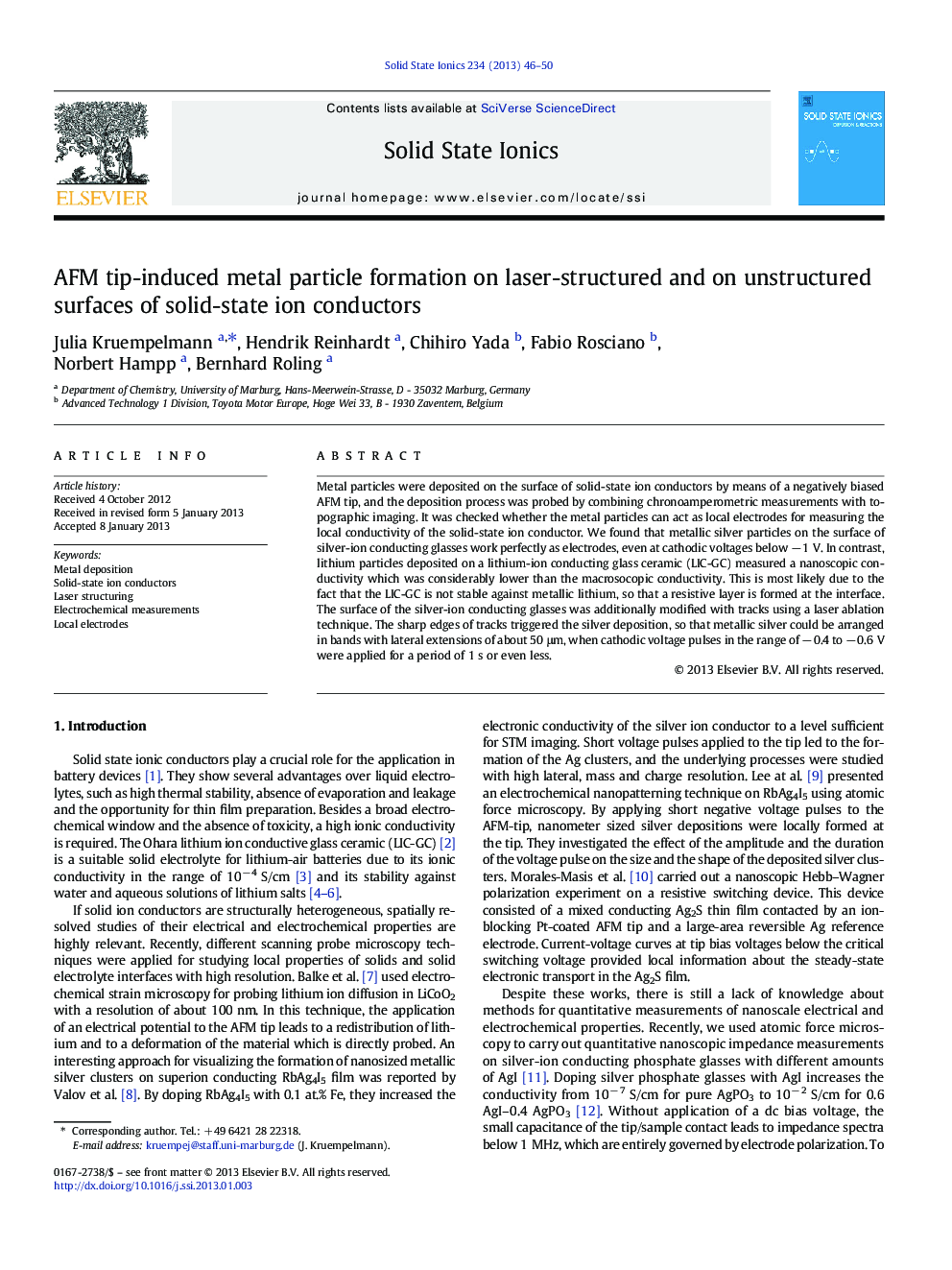| Article ID | Journal | Published Year | Pages | File Type |
|---|---|---|---|---|
| 1296782 | Solid State Ionics | 2013 | 5 Pages |
Metal particles were deposited on the surface of solid-state ion conductors by means of a negatively biased AFM tip, and the deposition process was probed by combining chronoamperometric measurements with topographic imaging. It was checked whether the metal particles can act as local electrodes for measuring the local conductivity of the solid-state ion conductor. We found that metallic silver particles on the surface of silver-ion conducting glasses work perfectly as electrodes, even at cathodic voltages below − 1 V. In contrast, lithium particles deposited on a lithium-ion conducting glass ceramic (LIC-GC) measured a nanoscopic conductivity which was considerably lower than the macrosocopic conductivity. This is most likely due to the fact that the LIC-GC is not stable against metallic lithium, so that a resistive layer is formed at the interface. The surface of the silver-ion conducting glasses was additionally modified with tracks using a laser ablation technique. The sharp edges of tracks triggered the silver deposition, so that metallic silver could be arranged in bands with lateral extensions of about 50 μm, when cathodic voltage pulses in the range of − 0.4 to − 0.6 V were applied for a period of 1 s or even less.
► Metal particles were deposited on solid-state ion conductors. ► Metallic silver particles work perfectly as electrodes. ► Resistive layer between metallic lithium particle and lithium ion conducting glass ceramic ► Modification of silver glass surface by laser ablation technique ► Metallic silver was arranged in band-like structures for band-electrode application.
